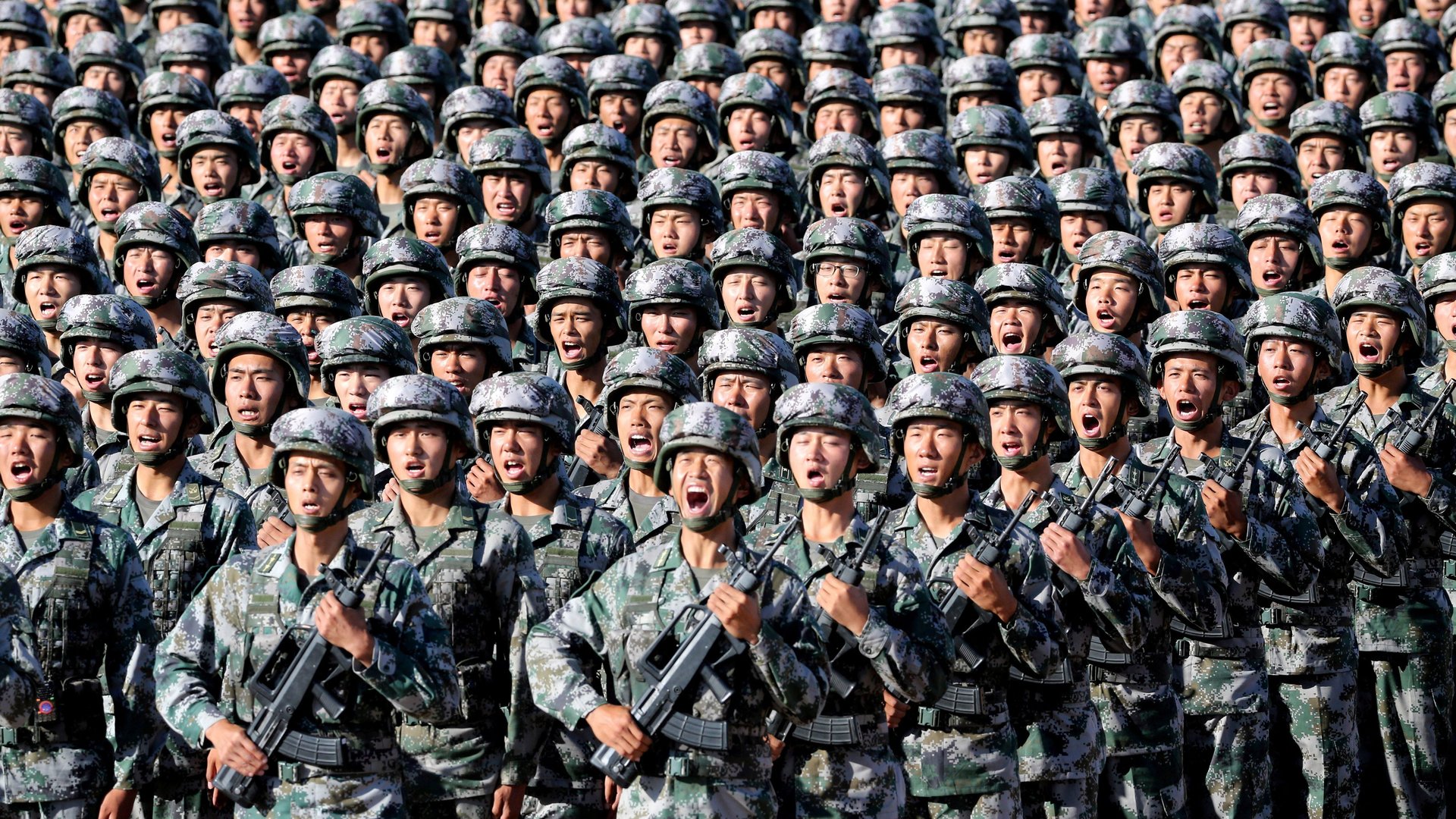China’s growing power is bringing military drills center stage in Asia
China will soon take part in unprecedented joint military exercises in Russia, sending 30 aircraft, 900 tanks, and 3,200 personnel to its neighbor’s far east.


China will soon take part in unprecedented joint military exercises in Russia, sending 30 aircraft, 900 tanks, and 3,200 personnel to its neighbor’s far east.
Russia’s drills, held every four years, are the largest since the early 1980s, and the inclusion of Chinese troops, a first, is seen as a major geopolitical shift. Moscow and Beijing each want to send a signal to Washington with military cooperation—though it’s China, not Russia, that the US now considers its main threat.
China’s participation in the drills later this month illustrate how joint military exercises are looming ever larger in its strategy as it expands its power and influence in the Asia-Pacific region. Its growing might is spurring other nations to initiate their own joint drills to counter Beijing. Such exercises are, as a result, becoming ever more prominent in the region.
Last year, China conducted at least 20 bilateral and multilateral exercises with other militaries, according to the US defense department (pdf, p. 31). These included a number of firsts, including a naval drill in the Baltic Sea with Russia and the inclusion of Chinese navy aircraft in drills with Pakistan.
Drilling it into ASEAN talks
Joint military exercises now figure largely in Beijing’s interminable negotiations with the Association of Southeast Asian Nations (ASEAN) over a code of conduct for the South China Sea. This month, China proposed that the two sides commit to not hold joint drills in the waterway with any countries from outside the region sans prior notice or agreement, with the US being the obvious nation in mind.
Beijing has also pushed for China and ASEAN members to hold joint military drills in the South China Sea. The exercises, agreed to this month, will be held in late October in an uncontested part of the waterway off China’s coast. The US, notably, is excluded. Military officers from China and ASEAN countries also held a tabletop exercise in Singapore earlier this month, again at Beijing’s suggestion.
China has also undermined joint drills not to its liking. In May, president Xi Jinping prodded his North Korean counterpart Kim Jong Un to insist that the US and South Korea suspend their annual military exercises. The following month, Donald Trump, after meeting with Kim in an historic summit, suspended the drills.
Must-see TV in China
Beijing has turned displays of military power into prime-time TV events for domestic viewers, stirring patriotism while putting the rest of Asia on notice. Last year, the People’s Liberation Army held large-scale war games in sand-swept Inner Mongolia, with the dust creating a battlefield atmosphere. State broadcaster CCTV showed footage at the top of every hour. In April, China conducted its biggest-ever show of naval power, with nearly 50 warships sailing through the South Chin Sea. Xi appeared at both events in military fatigues.
China’s displays have prompted other Asian nations to cooperate more closely and initiate joint drills of their own. This week, Japan said it would send a large helicopter carrier and escort ships to the South China Sea and Indian Ocean, with the fleet making stops in the Philippines, Indonesia, Singapore, Sri Lanka, and India, and conducting joint military exercises along the way.
In May, the US disinvited China from the biennial Rim of the Pacific exercise in Hawaii, despite its participation in previous years (at least in non-fighting components such as submarine safety). Defense officials cited “China’s continued militarization of disputed features in the South China Sea,” saying it was inconsistent with international norms and the pursuit of free and open seas.
That was clearly a message to Beijing, which is proving adept at sending such signals itself.